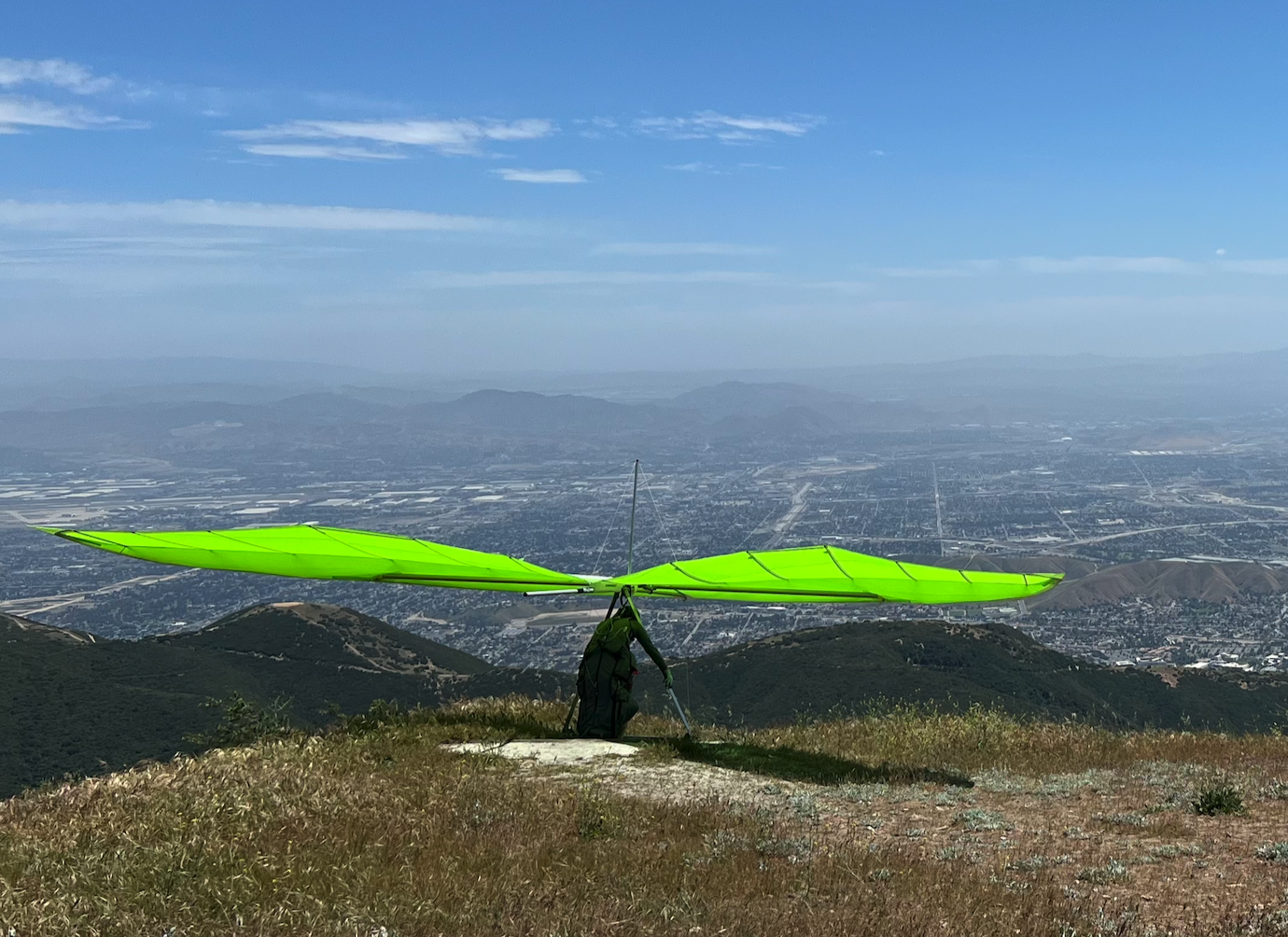✍️ Back to Quiet: Hang Gliding Revival
Wing‑surface musings, AI‑viral tales, and mountain‑soaring communities

I didn't set out to find it.
I was on a field run, testing signal range on a new LoRa node setup—chasing line-of-sight, climbing higher for clearer pings. The road turned to dirt, the dirt to gravel, the gravel to sky. And before I knew it, I was high in the mountains near Crestline, just following the ridgeline like some radio-obsessed moth chasing a better signal.
Up there, the spots that look good on a map? Turns out they're already in use. I crested the top and found a station, sure—but I also found something else.
A different kind of signal.
Nestled into that peak was a modest sign: Crestline Soaring Society. I knew the vibe before I even saw anyone. I coasted in silent on my motorbike, killed the throttle before I even stopped. Helmet off—and the first thing I heard?
The wind.
That's it. No traffic. No music. No chatter. Just the breeze playing with the pines and the distant flap of fabric wings catching thermals.
A few folks stood by the launch ledge, heads tilted skyward, watching gliders spiral in long, slow arcs. No phones. No chatter. Just quiet.
And in that moment? I realized—this is it.
This is the Wind & Wireless crossover I'd been hunting for.
No LTE. No pinged likes. Just long-range LoRa trackers in pockets, sending one simple, beautiful message:
"Landed safe. Come pick me up."
It's poetic, really. The literal act of catching invisible updrafts and trusting your wings. Just like our wireless systems—we build them hoping for range, resilience, and grace. Hang gliders don't need speed or noise. They need trust in the lift and the knowledge that someone's got their back when it's time to come down.
Maybe we got too obsessed with thrust, noise, velocity.
Maybe we forgot how satisfying it is to just ride the wind.
But it's still there. Up the mountain, off the grid, beneath sail and silence.
Bring that back.